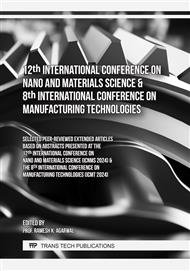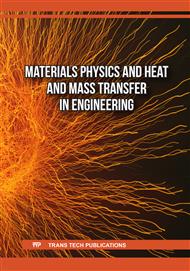p.3
p.13
p.21
p.27
p.41
p.47
p.57
p.63
Non-Arrhenius Transport Properties of Glass-Forming Materials in a Wide Temperature Range: A Systematic Study Based on the BSCNF Model
Abstract:
The understanding of the non-Arrhenius transport properties in glass-forming materials is of great importance from both, fundamental and applied points of views. In the present paper, we show that our model, the bond strength-coordination number fluctuation (BSCNF) model describes the temperature dependence of the non-Arrhenius transport coefficients in a wide temperature range. The BSCNF model also enables to characterize the glass-forming materials in terms of the mean values of the bond strength E0, the coordination number Z0 and their fluctuations ΔE and ΔZ of the structural units that form the melts. Importantly, in the light of the BSCNF model, one can discuss the physical implications of the materials that extend from the strong to fragile systems in a systematic way compared to other popular models. In addition, we present a new theory of the vacancy formation, and briefly mention that the extended theory along with the BSCNF model can be applied to discuss the freezing of defects.
Info:
Periodical:
Pages:
21-26
Citation:
Online since:
June 2024
Authors:
Keywords:
Price:
Сopyright:
© 2024 Trans Tech Publications Ltd. All Rights Reserved
Share:
Citation:



